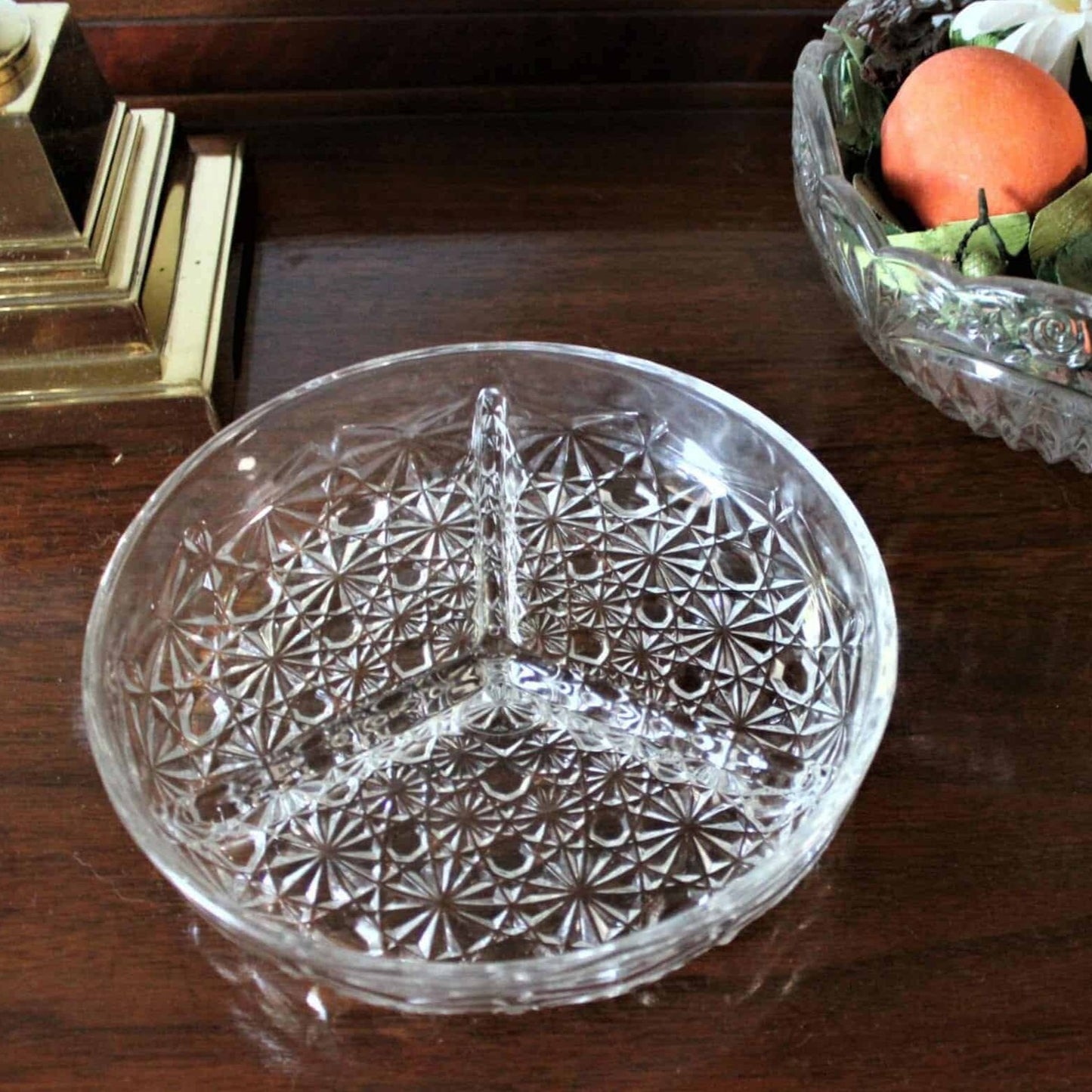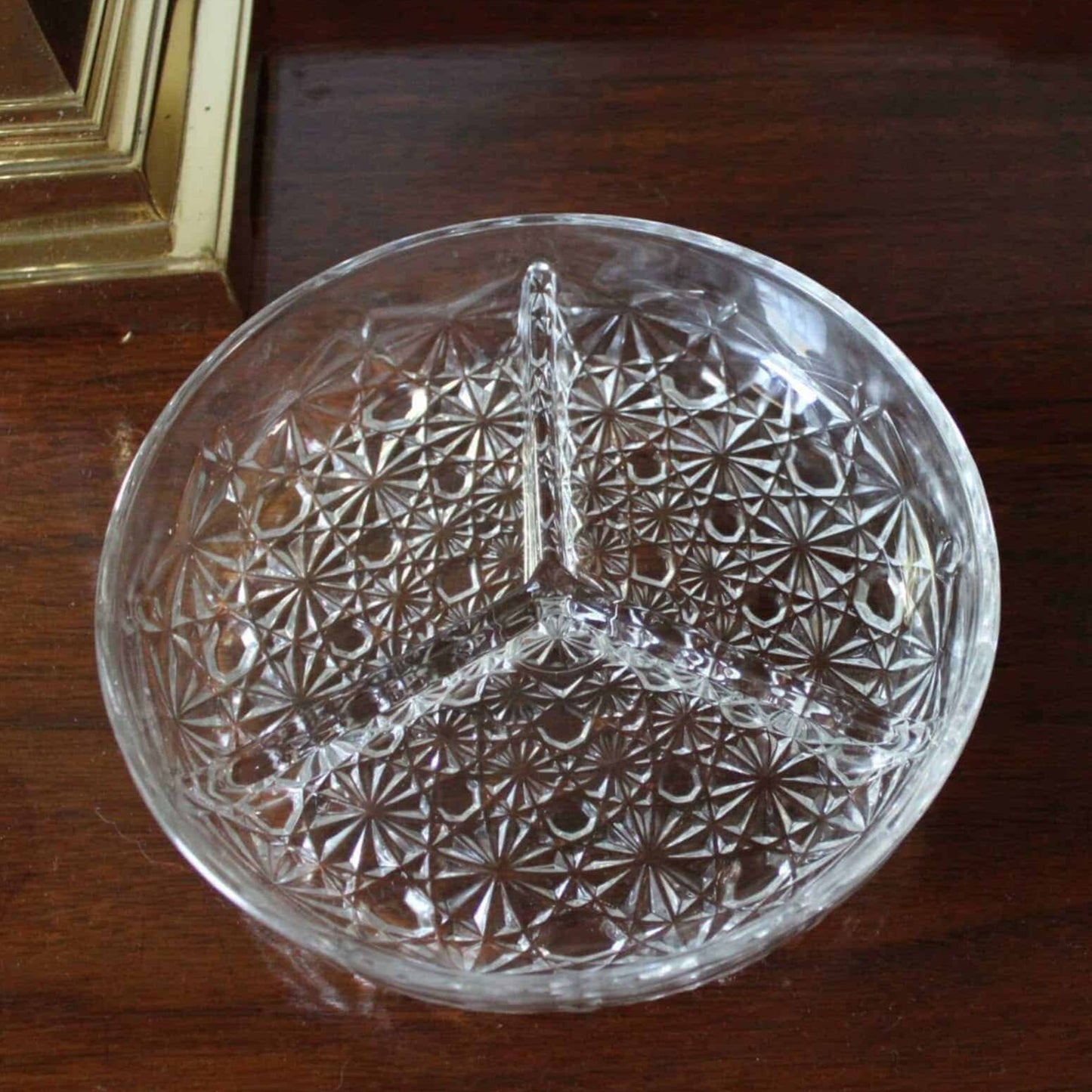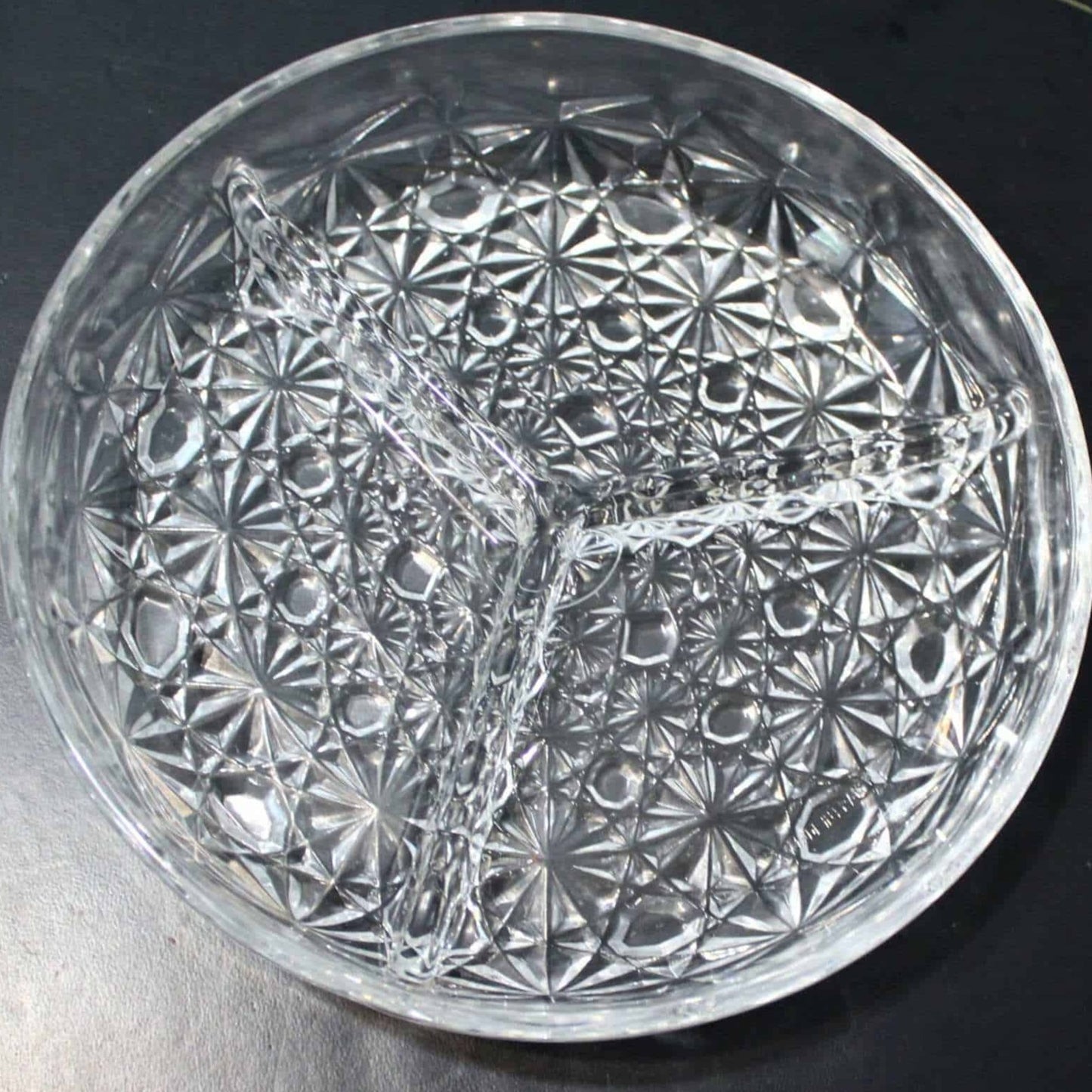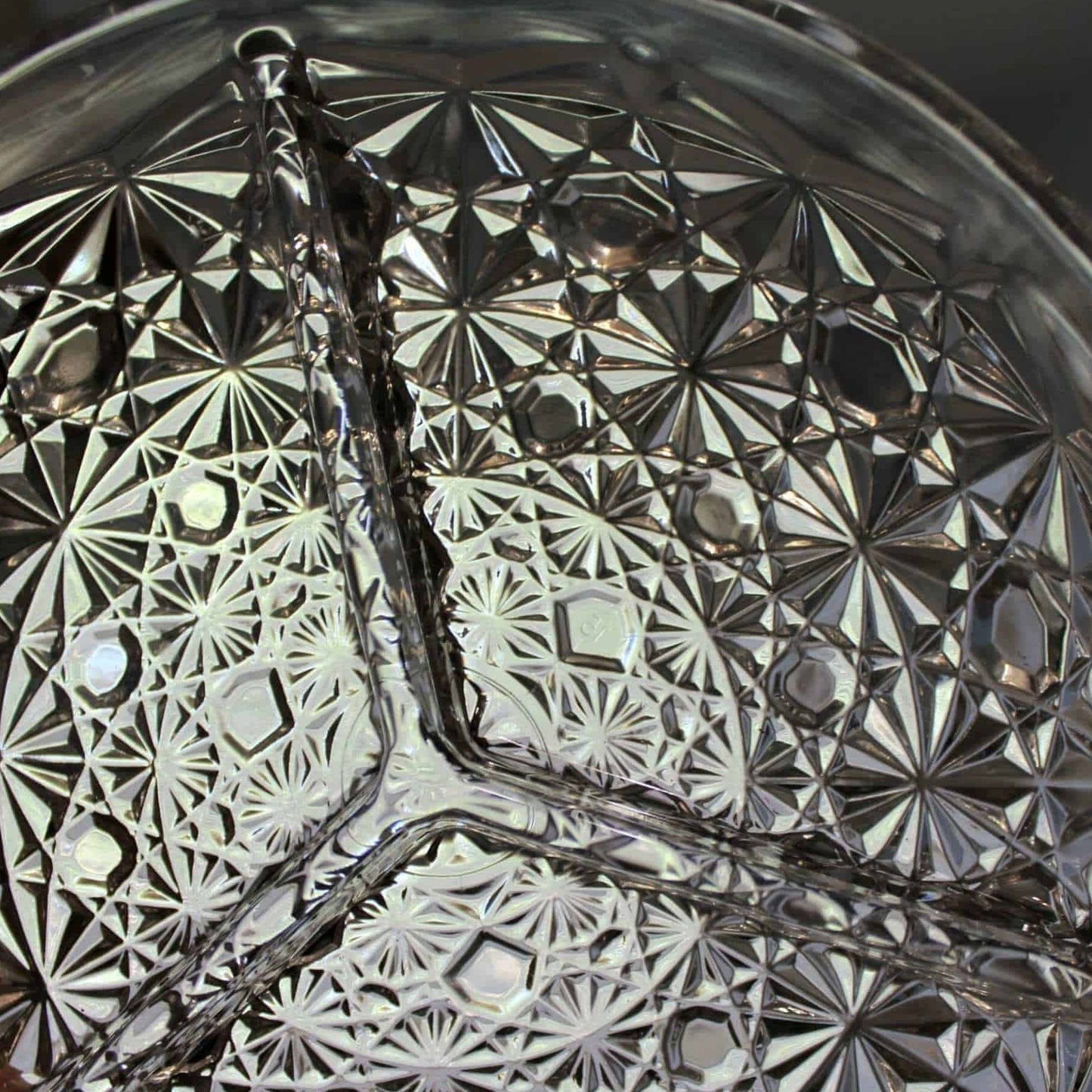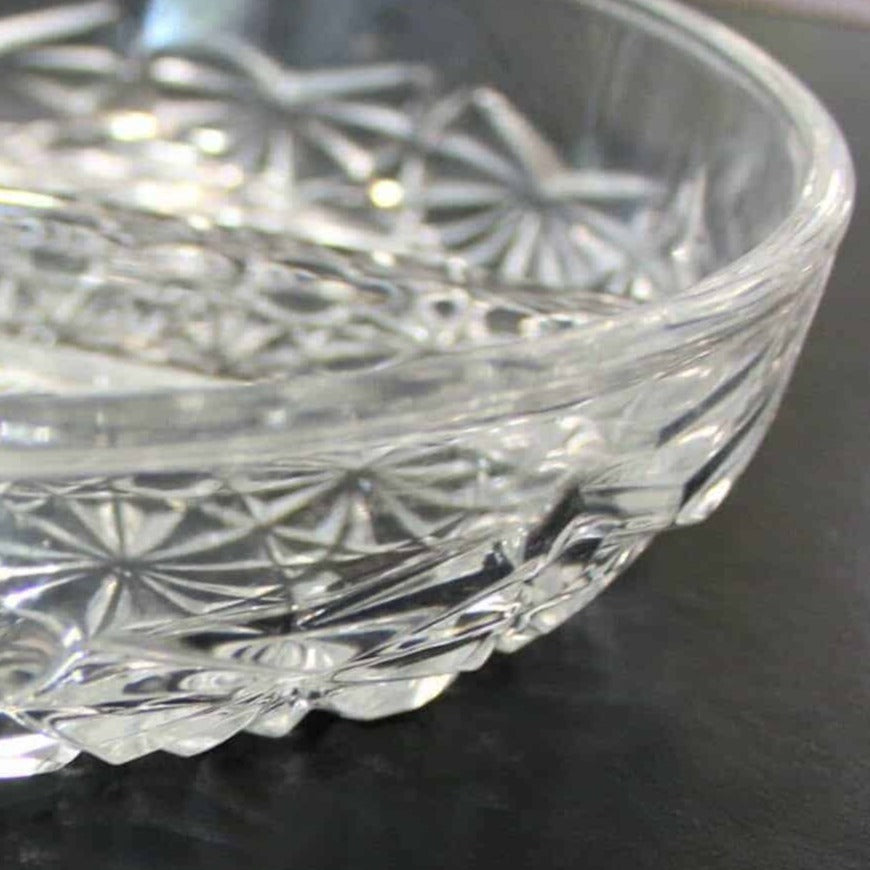1
/
of
5
Luxhem de Veropa
Vintage Divided Relish Glass Dish, Daisy and Button, France
Vintage Divided Relish Glass Dish, Daisy and Button, France
Regular price
$30.00
Regular price
Sale price
$30.00
Shipping calculated at checkout.
Quantity
Couldn't load pickup availability
- Vintage Serving Dish, Divided 3 Section Round Relish Dish, Daisy and Button Pattern, Decorative Shallow Bowl, Elegant Servingware, French Glass, (Discontinued)
- Made in France
- Vintage: 1960's - 1970's
- Description: This is a very pretty bowl, with 3 separate sections excellent for serving hors-devours, olives, nuts, candy or any other small food items. It is a highly collectible vintage pattern called Daisy and Button, which pointed us towards Fenton, Duncan Miller, Smith and other American glass manufacturers that produced this pattern. However, it's marked "Made in France", which called for further investigation. After much research, (see below for our findings), we learned this dish was made by Luxhem de Veropa, a glass maker in France. Great as a serving dish, or used to corral small items.
- Material: Pressed Glass
- Dimensions: 7.25 inches in Diameter and 1.5 inches Tall.
- Condition: Vintage - Used. Excellent Condition. There are no cracks, chips or scratches except as acceptable for normal wear and use. There is no cloudiness in this dish. Please review all pictures and make sure you love this item before purchasing, we can't accept returns. Please remember these are VINTAGE and ANTIQUE items, they are NOT new, every effort has been made to show any scratches, wear and tear and imperfections.
This dish was made by Luxhem de Veropa, one of the many French glass companies located in Rive-de-Gier, a commune in the Loire department in central France. In the 19th and early 20th centuries, it was common practice for glass companies to produce their own variations of successful patterns. The Daisy and Button pattern became one of the most recognizable and successful pressed glass designs in history, originally patented in the United States in the 1880s, it became common practice to replicate it, in this case, in France.
Share
